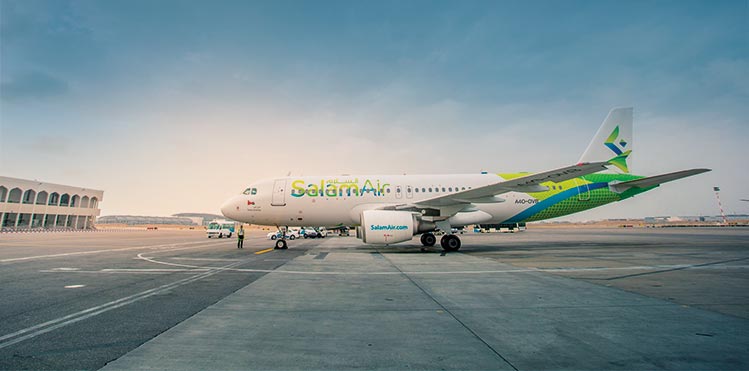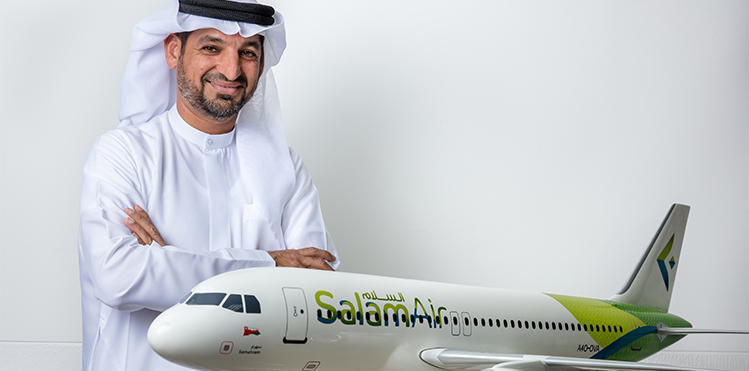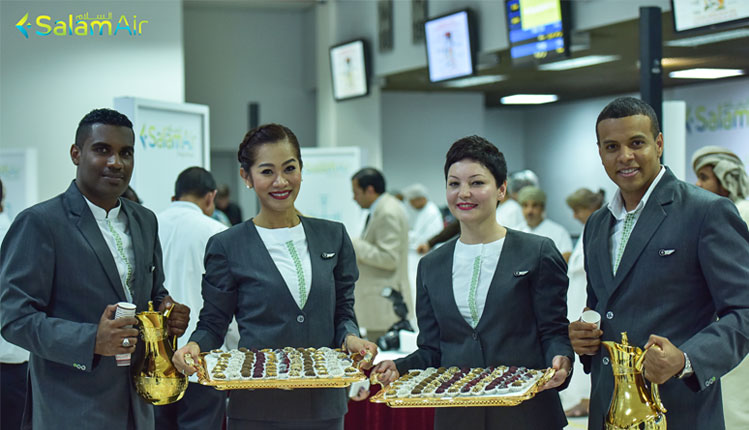Taking flight for the first time on 30 January 2017, Oman’s first low-cost carrier SalamAir has established a strong presence in its home market, now having three 174-seat A320s operating to nine destinations throughout the Middle East on either a year-round or seasonal basis. Captain Mohamed Ahmed, CEO SalamAir, briefs Jonathan Ford on the challenges and successes of establishing a new airline in Oman, and what the carrier has in store for the next five years.

Entering the aviation industry is no easy feat and requires meticulous planning, starting from obtaining the licenses and securing the aircraft, all the way to getting the right partners onboard,” Captain Mohamed Ahmed, CEO SalamAir, tells Airport Business. “In addition, with the launch of every new destination, there are always country-specific protocols that need to be taken into consideration, such as aviation policies, regulations and securing the on-ground and in-flight operations handlers.”
With this in mind, it has been a very busy first 11 months for SalamAir, with Oman’s first-ever low-cost carrier (LCC) having taken flight on 30 January 2017, initially with a three times daily operation b etween its main base of Muscat and Salalah on Oman’s east coast. The airline has since expanded heavily in both domestic and international markets, now operating three aircraft, all configured with 174 seats, to destinations around the Middle East, including Dubai International, Jeddah and Sialkot from Muscat, while flights to Doha were the latest to launch on 22 November. SalamAir also offers an Omani domestic link between Salalah and Sohar, plus a seasonal route to Taif.

Captain Mohamed Ahmed, CEO SalamAir: “Our focus is on short- to medium-haul operations, increasing connectivity to popular and underserved destinations within a four to five-hour flight time of our base of operations in Muscat.”
“For us at SalamAir, the last 11 months have been incredibly busy,” says Ahmed. “Thanks to the strong support we received from the Public Authority for Civil Aviation, we were able to achieve every planned milestone in our journey, in order to offer travellers in Oman and the region a more convenient and affordable travel alternative.”
A key challenge has been introducing the LCC concept to the local community and creating a positive consumer attitude towards this relatively new business model in the region.
The aviation industry in the Middle East is constantly evolving, and competition is always on the rise as new airlines enter the market. “Our performance has also evolved and developed as we become more familiar and established in the market. That said, we expect to break-even after three years of operations if everything goes according to plan,” Ahmed comments.
During its first six months, SalamAir carried over 220,000 passengers, with Ahmed hoping to see this number more than double to 500,000 for the first full year. “These figures are testament to our ongoing commitment to growing Oman’s first LCC locally, regionally, and internationally. We intend to keep this momentum going.”
20 aircraft by 2022
While initial business costs remain high for SalamAir, the carrier has ambitious plans for rapid expansion, with the airline aiming to have 20 aircraft in its fleet by 2022. The strategy is to add three to four additional units per year until then. “Our focus is on short- to medium-haul operations, increasing connectivity to popular and underserved destinations within a four to five-hour flight time of our base of operations in Muscat,” Ahmed explains. “Our market research has determined that the A320 is the most suitable aircraft for our planned operations. It provides room and comfort for guests travelling with us, and fuel efficiency and fleet standardisation that helps us keep a low maintenance overhead.”
Meanwhile, the airline’s aim is to increase its route network from the current eight to 65 destinations within the next five years. Next Ramadan, for example, it will bring back the Salalah-Taif seasonal route based on market demand, and connect Salalah directly to more destinations as the fleet expands. “We always keep a close eye on the market, in order to identify emerging demands and trends, as this is a key factor to remaining competitive in the current economic climate,” says Ahmed.
“Additionally, we listen to our customers and follow their needs, as well as conduct our own detailed route studies before launching any new destinations. Some of these destinations are subject to traffic rights and bilateral agreements, and we are working closely with authorities to facilitate these operations.”

SalamAir introduced a daily service from Muscat to Jeddah’s King Abdulaziz International Airport in April, opening up important new tourism, trade and investment opportunities.
Building strong relationships with its airport partners is also central to the SalamAir strategy. “We champion partnerships and collaborations in which both parties can enjoy the mutual benefits of a good relationship.”
One of the most recent evolutionary changes in the Middle East aviation market is the new partnership between Emirates and flydubai, mirroring similar partnerships between airlines in Europe. “Our service complements what Oman Air offers by providing travellers with more options,” Ahmed comments. “We do collaborate with the airline on many aspects, especially ground handling, engineering and training. SalamAir and Oman Air have a common goal of serving Oman, and together we can increase connectivity to the Sultanate where the tourism industry is rapidly growing. Although discussions about partnerships have not been explored officially, it remains a valid option, as we can work together in certain areas to optimise efficiency and create value for our customers.”
SalamAir factbox
Fleet: three A320s
Destinations: nine (November 2017)
Passengers (1H): 223,765
Inaugural route: Muscat-Salalah (30 January 2017)







